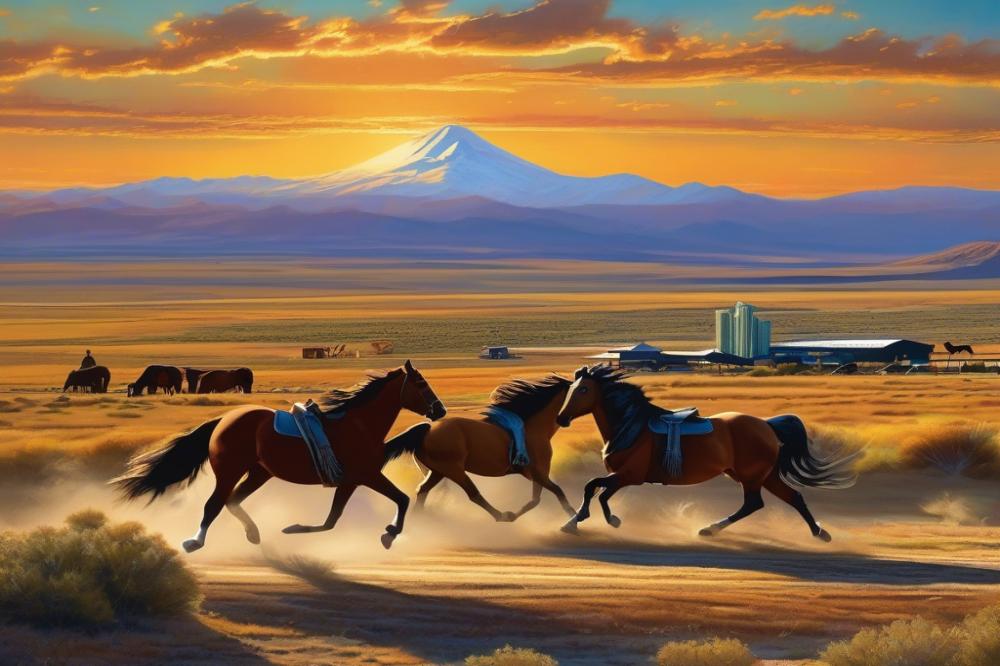Introduction
The significance of Horses in the American Wild West cannot be overstated. They were more than just animals; they were vital to survival and prospering in harsh conditions. Across the expansive plains and rugged mountains, these animals shaped the lives of many people.
Different cultures utilized them in various ways. Native Americans viewed them as symbols of strength and freedom. They relied on them for hunting, travel, and trade. In contrast, settlers and ranchers depended on them for farming and transportation. Each group recognized their value in the Wild West Economy.
As communities grew, the role of these creatures evolved. They could be seen pulling wagons or carrying cowboys on long cattle drives. Such versatility made them indispensable to everyday life. During conflicts, mounted soldiers relied on them for mobility and speed. This relationship with these animals showcased a mutual dependence that lasted for generations.
As the West transformed, so did the people’s reliance on them. With the rise of railroads and automobiles, their roles changed, yet memories of their importance lingered on. The spirit of the Wild West continues in stories and legends, highlighting the bond between humans and their equine companions. This exploration delves deeper into the many ways these creatures were woven into the fabric of life in the American frontier.
The Role of Horses in Transportation
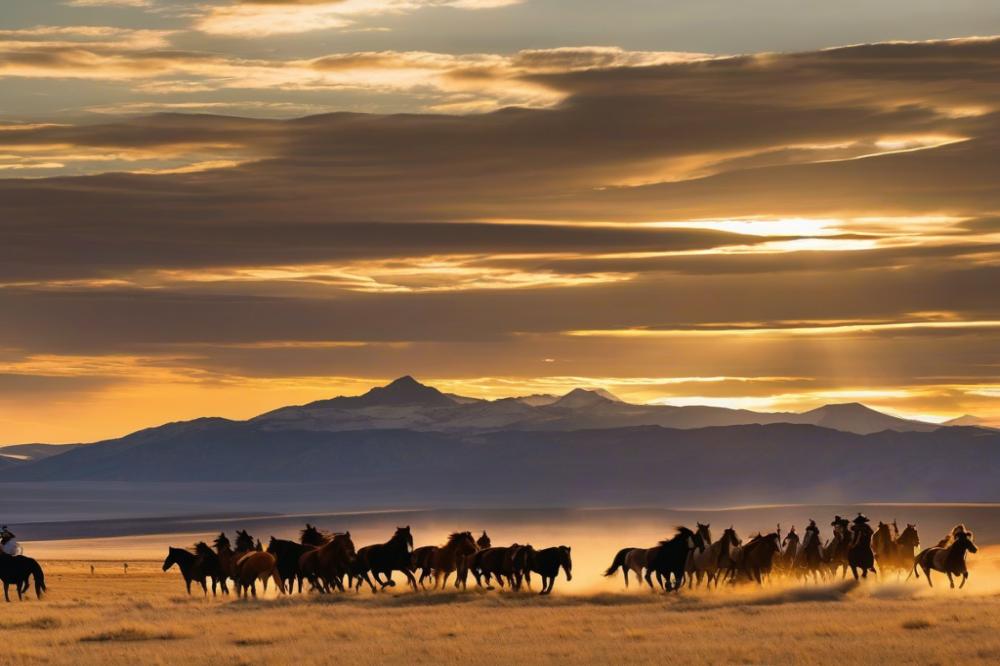
Mobility played a vital role in the daily lives of those in the American Wild West. For many, riding meant more than just a way to travel; it was a necessity. The wide-open spaces made walking impractical for long distances. Therefore, owning a reliable steed became essential for settlers and traders alike.
Trade and commerce flourished because of these animals. Merchants could move goods from one settlement to another much more quickly than before. Bartering and selling were common in towns, and having a horse made these transactions easier. Without them, the flow of products and resources would have slowed significantly across the frontier.
Additionally, communities found better ways to connect. Gathering news from neighboring areas was not possible without quick transportation. A rider could deliver messages about local events, new arrivals, or even emergencies. These interactions helped build strong relationships, fostering a sense of community among people spread across vast regions.
A significant factor in frontier life, these animals bridged distances. Families could visit relatives residing miles apart. In places where roads were scarce, paths formed by horse travel became guides for those who followed. Towns often relied on these routes to develop trade links and encourage growth.
During this era, travel was often unpredictable and challenging. Riders faced various weather conditions and rough terrain. However, the bond between riders and their animals proved unbreakable. Each journey added to the natural stories shared around evening campfires.
Horses in Agriculture and ranching
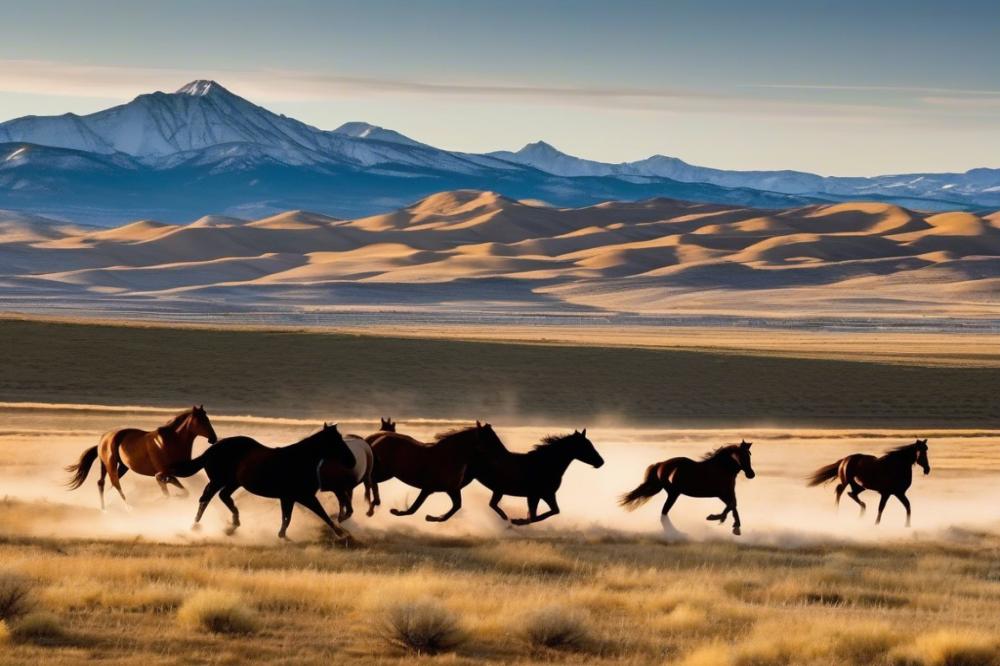
In the American Wild West, the use of horses was vital in farming and livestock management. Farmers relied heavily on them to plow fields, plant seeds, and even harvest crops. These animals helped push agricultural boundaries, making it possible to cultivate larger areas of land. During those times, a single horse could replace several men, boosting productivity significantly.
Ranching greatly benefitted from these animals too. cowboys depended on them for herding cattle across vast open ranges. Their speed and agility made it easier to manage large herds, particularly during branding or roundups. Also, ranch properties often expanded because skilled riders could move livestock more efficiently.
Plowing, planting, and harvesting all became more effective with the aid of these animals. Before tractors were introduced, families worked alongside them through all seasons. Horses powered plows, breaking up stubborn soil. When it came time to plant seeds, they provided the necessary pull for seed drills. Additionally, during harvest, they helped transport goods to the market or storage.
The impact on the ranching economy was significant. It allowed for increased food production, which stoked local economies. The ability to raise more cattle directly linked to profitable trading in towns. With better livestock management, ranchers found themselves in a better position to meet consumer demands. After all, a thriving local economy often relied on strong ranching operations.
Over time, these animals became central to the culture of the West. Ranchers and farmers didn’t just see them as tools but as partners in their work. Their relationships were often built on trust and mutual respect. Together, they faced challenges that came with the terrain and weather.
Horses in Mining and Resource Extraction
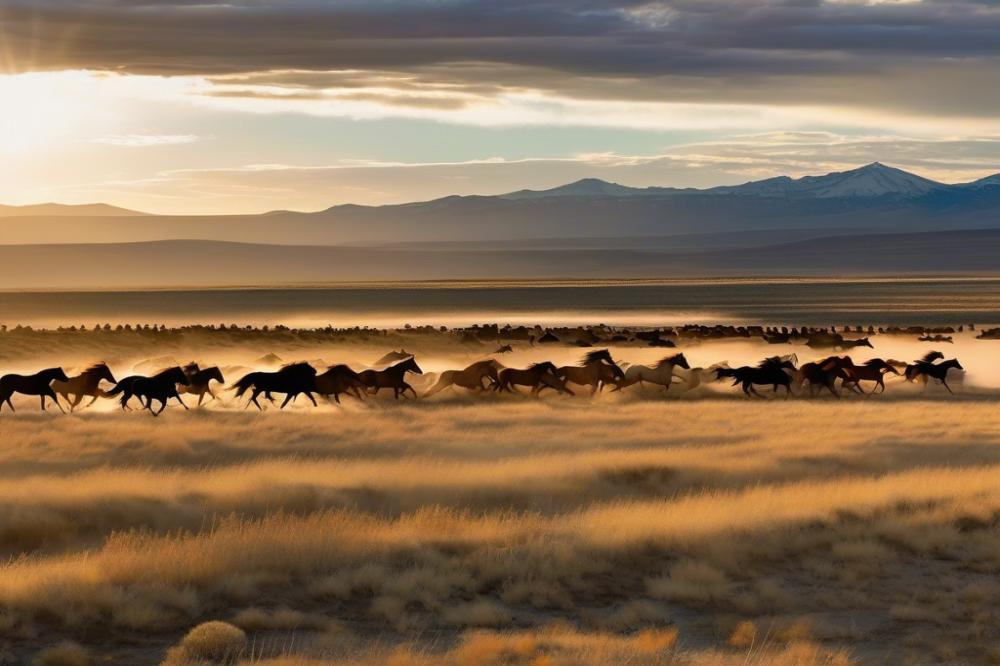
Throughout the American Wild West, the presence of horses profoundly transformed the mining industry. They played a crucial role in transporting miners and their essential supplies to remote locations. Without these animals, reaching the gold and silver mines would have been much more challenging. Daily operations relied on their strength to carry heavy loads across harsh terrain. This effort built a connection between isolated mining sites and larger settlements.
Transporting goods became more efficient with these reliable animals. Miners could move equipment and ore much faster than if they relied solely on human power. Carting supplies like food, tools, and materials became routine. Thanks to these animals, mining operations grew and expanded, which attracted more workers eager to strike it rich. The combination of speed and strength offered by horses revolutionized daily activities in the booming mining towns.
As mining towns sprang up, many started to flourish due to increased trade and commerce. More people meant businesses cropped up to serve new residents. General stores, saloons, and blacksmiths were vital to supporting miners and their families. Horses helped link these new communities, providing an essential service that made daily life more manageable. Towns grew because transportation became reliable, helping to carry both people and goods.
In short, the contribution of these animals to the mining and resource extraction process was invaluable. They supported both miners and the towns that evolved around the mining industry. As mining boomed, the animals facilitated growth and development in ways that continue to echo through history.
Horses in Cowboy Culture and Frontier Life
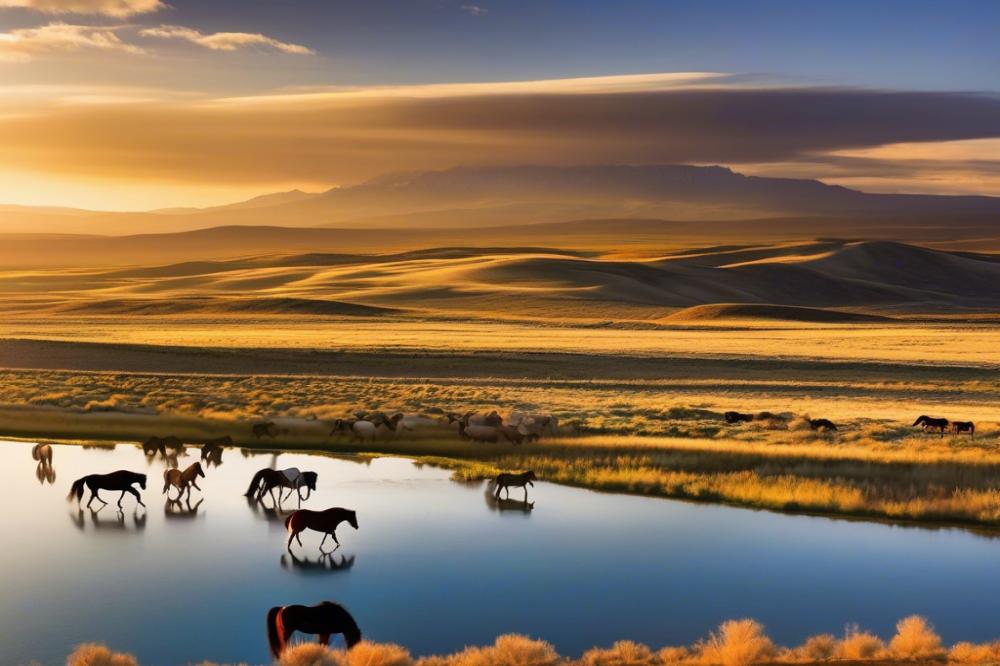
Symbolism of horses in cowboy and pioneer lifestyles
In the life of cowboys and pioneers, these animals represented more than just transportation. They were symbols of freedom and strength. A reliable steed became a companion in tough times. For many settlers, owning one was a mark of social status. In stories and songs, these creatures embodied the spirit of the West. Their images often appeared in art, reflecting the values of the frontier. A cowboy’s bond with his horse was deep, highlighted in daily work and late-night campfires.
Impact on social and recreational activities
Ranching and farming demanded a lot from the community. Social gatherings frequently centered around riding. Rodeos and competitions were popular events where skills were showcased. Friends and family would come together to celebrate achievements. People shared stories during these festivities, strengthening community ties. Parents taught children the art of riding. Social interaction was built around caring for and riding these animals. Even leisure activities such as trick riding became popular, contributing to cultural identity.
Equestrian traditions and their economic implications
Many equestrian traditions emerged from necessity and camaraderie. Events like cattle drives and horse races created economic opportunities. Local businesses grew around the needs of ranchers and riders. Stables and feed shops became common sights in towns. These enterprises provided jobs and boosted local economies. Horse ownership also impacted trade, creating a demand for gear and supplies. Techniques passed down through generations influenced ways of working and living. As traditions evolved, they increased tourism, drawing visitors eager to experience cowboy life.
The cultural significance of Horses
Horses in Native American Culture and Society
Native American tribes held deep connections to these animals. For many, the creatures symbolized strength and freedom. Traditional lifestyles often revolved around them, as they were vital for hunting and transportation. Some tribes, like the Lakota, viewed them as sacred beings. The spiritual bond between the tribes and these animals is evident in their stories and ceremonies.
Representation in Art, Literature, and Folklore
Art from the era often includes depictions of these majestic animals. Paintings and sculptures reflect their beauty and grace. Folktales frequently feature them as central figures. Literature from the Wild West also captures their importance. Stories about cowboys and cattle drives would be incomplete without them. Poems and songs, too, celebrate the spirit of the frontier, highlighting how they were woven into the fabric of daily life.
Influence on the Cultural Identity of the American West
The connection to these creatures shaped the identity of the region. Cowboys have become icons, and much of their lore revolves around their bond with these animals. Local festivals often celebrate equestrian skills, showcasing the deep-seated appreciation for them. Additionally, many movies portray the Wild West, emphasizing their role in everyday adventures. As time passes, their significance continues to resonate, reminding us of a unique chapter in American history.
Final Thoughts on the Economy of the Wild West
The influence of horses in the economy of the American Wild West cannot be overstated. They served as vital tools for ranching, transportation, and communication. Cowboys relied on these animals for everything from herding cattle to chasing down outlaws. Stagecoaches, pulled by sturdy steeds, connected remote towns and facilitated commerce across vast landscapes. Without these animals, many aspects of daily life simply would not have been feasible.
Equally important was the role that horses played in shaping the social fabric of the Wild West. Towns sprang up around horse trails, saloons catered to weary travelers, and markets thrived where ranchers gathered to sell their cattle and goods. These gatherings fostered community ties and created a culture that celebrated adventure and opportunity. The legacy of that era remains prevalent in American culture today.
Reflecting on the past, it is clear that the bond between humans and these remarkable creatures defined an era. From the dusty trails to the thunderous hooves that echoed through canyons, the spirit of the Wild West was intertwined with everyday life. Stories of daring cowboys, vast ranches, and frontier towns filled with hope and ambition continue to captivate our imagination. This deep-rooted legacy has woven itself into the very fabric of our nation’s history.
In conclusion, the multifaceted role of these animals will always be remembered. They were more than mere companions; they were essential to survival and prosperity in a time of great change. The impact of horses in the Wild West goes beyond economics; it is a lasting testament to adventure, resilience, and the human spirit.

